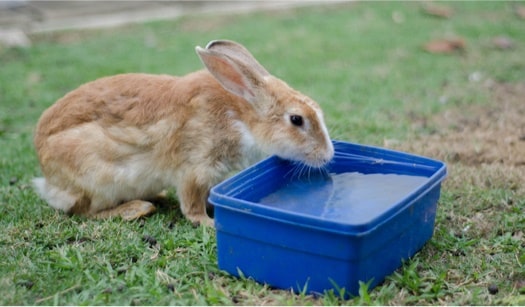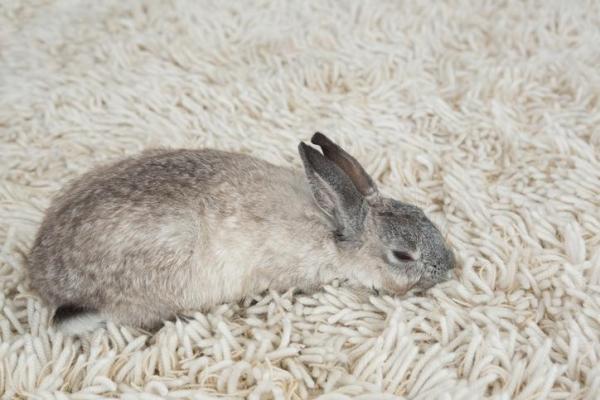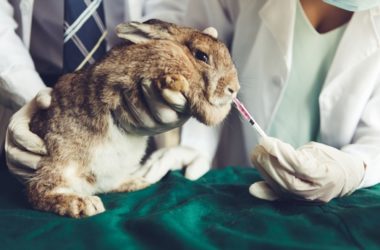Being a pet owner involves making sure your beloved furball is kept as safe as possible. Some dangers are easily escapable and then are some that sneakily attack our pets, especially our rabbits. Predators can be kept away from our rabbits and they can be escaped from and we make sure accidents are avoided to the best of our ability. However, there is a more sinister danger lurking around posing as a constant threat to our bunnies. This danger is mold.
Mold is something extremely common and hard to get rid of and is extremely lethal to our rabbits. So much so that it ends up being fatal. The mold works fast in affecting our rabbits with respiratory failure and killing them. Other times, it is a slow kill causing long-term illnesses that leave your rabbit in a state of constant pain and this is especially where their liver is concerned.
The good news is that your rabbit’s exposure to mold if proper precaution is taken, can be avoided. It will require effort on your part as their guardians to ensure that the environment that they live in is clean and all vulnerability to mold is eliminated. Read on to find out how mold affects their life and how to keep them safe.
Is mold harmful to rabbits?

By now you’ve probably understood just how dangerous mold can be. If inhaled, then it leads to respiratory diseases. If they escape the danger in the short run, it will eventually lead to liver damage.
There are a variety of molds that can affect your bunny. Mold releases mycotoxins which are basically a variety of toxins and they all affect your rabbit’s health in different ways, all dangerous to their health. The most common concerns to your rabbit’s health as a result of mold exposure are:
- Ergot: this toxin has a direct impact on your bunny’s blood flow which will cause them to lose control of their legs.
- Aflatoxin: this is the most common mycotoxin that affects rabbits. In the short term, it can lead to fatal stomach issues. In the long term, it can lead to liver damage.
- Chaetomium and Stachybotrys Chartarum: this kind of mold will eat away your rabbit’s immune system which is already extremely sensitive as it is. As a result, your rabbit is more likely to become sick.
These are just three examples of a long list of mycotoxins that come associated with mold. Irrespective of how many we list, they are all dangerous in one way or another.
How do rabbits become exposed to mold?

Unsurprisingly enough, rabbits come in contact with mold the same way as humans do. The toxins are present in the air they breathe and that causes all their health issues.
And it is not just indoor rabbits that are exposed to mold, even outdoor rabbits can be affected by it too. The way they come into contact with mold is either through moldy food, moldy plants, unclean living conditions, and insufficient air in the rabbit’s hutch.
Rabbits love eating and are indiscriminate eaters which means they’ll eat anything and everything they can get their paws on even if they are moldy. You’ll need to make sure the hay is changed daily and that any uneaten food should be removed from the cage. Also, make sure their cage is cleaned thoroughly at least once a week. Similarly, their litter needs to be cleaned daily as well. Damp litter and soiled litter is a prime attraction for aflatoxin.
Also, make sure their cages get sufficient clean air. If the air they breathe in is unhealthy then that makes them vulnerable to health issues.
What are the physical symptoms of mold exposure?

Mycotoxin or mold poisoning, unfortunately, is detected pretty late and by that time it’s done its damage. To make things even more difficult, rabbits are good at hiding their symptoms so you might not know that they’re sick, to begin with. Nevertheless, if you keep a close eye on your rabbit then you may be able to identify certain symptoms that come with mold poisoning.
- Your rabbit will lose their appetite and that will result in drastic weight loss. Some rabbits might accept food initially and then reject it and some might simply refuse the food outright.
- Your rabbits will be in clear abdominal pain.
- They will suffer from sudden upset tummies which will include loose stool.
- Sores around the mouth and face.
- Discharge coming out from the eyes.
- Fever. A low body temperature lower than 101F is too low and is a cause of concern.
- Changes in their reproductive cycle especially in unspayed female rabbits.
- There will also be blood present in their poop. This is the most serious symptom that indicates that it is too late.
These are just the visible signs; you can also determine moldy toxicity through testing. For that, you will need to visit your vet who will run the kidney, liver, and blood function tests.
If you do manage to detect mold poisoning in its early stages, your rabbit may still have a chance to survive. You will need to rush them to a vet who will probably use intravenous fluid to the toxins out of their system. They may also give drugs and sucralfate to treat internal bleeding and ulcers. And your vet will advise you to keep their hutch in an appropriate location to avoid mold recurrence.
Conclusion:
No one said being a pet owner is going to be easy. It requires a lot of vigilance and upkeep to make sure that their health is not compromised in any way. In our everyday lives, there are many things that our rabbits are exposed to and if we don’t have the proper knowledge, we won’t be able to protect our pets from those dangers. Rabbits can live up to 12 years and our aim should be to allow them to live a fulfilled life.
